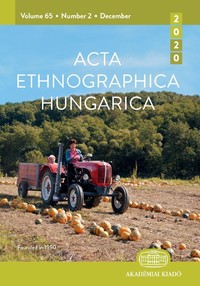Traditional Ecological Knowledge and the Cultural Significance of Plants in Hungarian Communities in Slovenia
Traditional Ecological Knowledge and the Cultural Significance of Plants in Hungarian Communities in Slovenia
Author(s): Dániel Babai, Mátyás Szépligeti, Antónia Tóth, Viktor UlicsniSubject(s): Cultural Anthropology / Ethnology
Published by: Akadémiai Kiadó
Keywords: ethnobotany; Northeastern Slovenia; traditional ecological knowledge; use value index; salience
Summary/Abstract: Traditional ecological knowledge of plants is an important aspect of scholarship in relation to land use and contributes to the sustainable use and management of natural resources as well as to the monitoring of changes in the natural environment. The aim of the present paper was to examine traditional ecological knowledge in Hungarian communities in Slovenia in connection with knowledge of the plants growing in the region, their local names, and their uses. We quantified the earlier role of the utilized plant species in order to determine the former significance of certain species. We carried out structured interviews with a total of 20 individuals in three studied settlements. In the Hungarian communities in Slovenia, we uncovered knowledge of a total of 130 folk taxa. Of these, 123 taxa have local names. The majority of the folk taxa can be correlated with a single biological species. A significant proportion of the known species were utilized in some way, most of them as medicinal plants, wild edible plants, or ornamental plants. As in other farming communities, the most important species are mainly woody plants, which include the common hornbeam, the common juniper, and the silver birch. Among the herbaceous plants, utilization of the dandelion, nettle, and bulrush was significant. Members of the older generations living in the Hungarian communities in Slovenia still retain knowledge of plants that were once used on a daily basis, along with their local names and the traditional ecological knowledge connected with their earlier use.
Journal: Acta Ethnographica Hungarica
- Issue Year: 65/2020
- Issue No: 2
- Page Range: 481-511
- Page Count: 31
- Language: English

